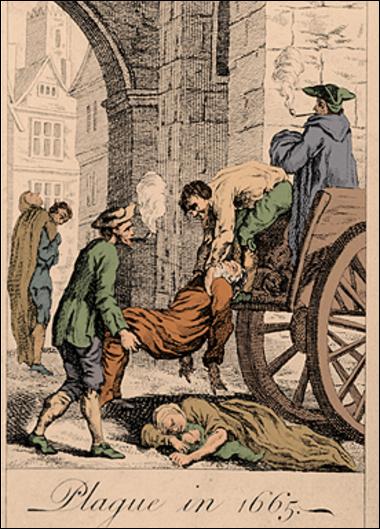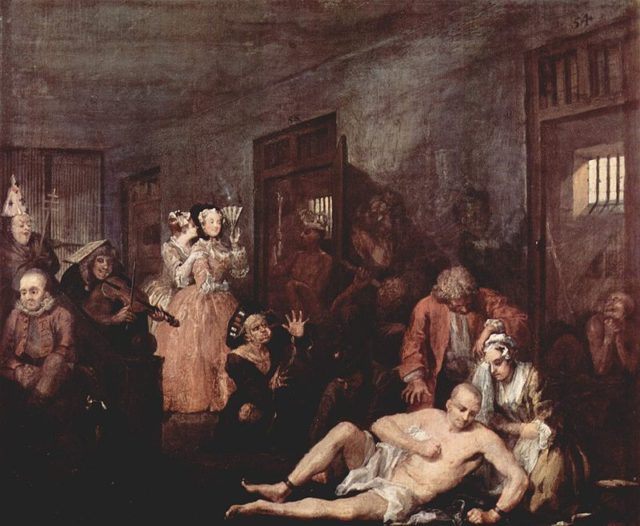A group of bodies discovered below London’s Liverpool Street station is thought to be the resting place of about 30 victims of the Great Plague of 1665. Archaeologists uncovered the gruesome discovery through the excavation of the Bedlam funeral ground at Crossrail Place in the east side of the city.
The mass grave is strikingly different to other sites at the burial ground and could offer more knowledge of the catastrophic outbreak which killed a fifth of London’s population in the 17th century. The Great Plague started in 1665 and is believed to have originated with the Yersinia pestis microorganism, which is typically transferred through the bite of an infectious flea. The last major outbreak of the bubonic plague in England killed an estimated 100,000 people.

Several of these victims are believed to have been buried in Bedlam Burial Ground, also known as Bethlehem New Churchyard, since the disease began to overflow the graveyards. It’s adjacent to what was previously Bethlem Royal Infirmary, the first dedicated psychiatric organization in Europe. It contained London’s religious nonconformists, the poor, and patients from the asylum.
The cemetery is being unearthed to permit construction of the brand-new Liverpool Street facility that will service the cross-London rail system. This is a rare opportunity for archaeologists to study previously unattainable areas of London, and to obtain more knowledge of the deaths and how the Londoners lived from the 16th and 17th centuries.
The vast burial ground is so different compared to the individual graves discovered in the Bedlam graveyard, probably due to the catastrophic outbreak. Closer analysis should be able to tell if this was a pit from The Great Plague in the year of 1665, but it is hoped that this ghastly discovery will tell archaeologists more about one of London’s deadliest epidemics.
Specialists suspect the victims died as a result of the plague for the reason that a headstone reads 1665, and the bodies seem to have been buried hurriedly on the same day. Regardless of the visual aspect of the cavity, which appears like a vast burial ground, the bodies were buried in brittle wooden coffins which now have decayed. The skeletons will soon be examined by osteologists employed by the Museum of London Archaeology – scientific trials might uncover if the bubonic plague or some different influence was the origin of the deaths.
Archaeologists from the Museum of London started the arduous procedure of unearthing Bedlam cemetery at the beginning of this year and have now uncovered approximately 3,500 skeletons. This spot was initially used from 1569 to 1738 and witnessed the age of Elizabethan exploration, the Restoration of the Monarchy, the Great Fire of London, the English civil wars, and many plague outbreaks.
The excavation has shown that 30,000 individuals were buried at Bedlam between 1569 and 1738. The skeletons will be buried again on the ordained ground after the end of the analysis.
The burial site got its title from the neighboring Bethlehem Hospital which took care of the mentally ill, even though only a few Bedlam inhabitants are considered to have been buried there. With mental patients displaying no physical evidence of sickness, determining which of the remains are from the hospital will be nearly hopeless for experts.

At the beginning of this year, Crossrail directed research into the identification of the 5,000 bodies buried at the site. Titles include Sir Ambrose Nicholas, who was the civil authority of London in the year of 1575, and Dr. John Lamb, an astrologist and consultant to the First Duke of Buckingham. Lamb was stoned to death by an enraged mob outside a theater in the year of 1628 following an accusation of black magic and rape.
Some others found in the investigation, carried out by 16 recruited volunteers, are victims of rioting by “Fanatiques” described in the journals of Samuel Pepys in the year of 1661.
After the excavation of the human remains, the workers will then unearth medieval marshland deposits and Roman ruins including a route that runs below the station, which has currently provided various interesting Roman artifacts such as cremation urns and horseshoes.
Currently, Crossrail has discovered about 10,000 artifacts in over 40 construction sites. Archaeologists are anticipating the completion of work on this location by September, and will continue on a new eastern ticket corridor by constructor Laing O’Rourke.
